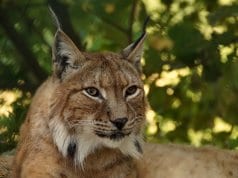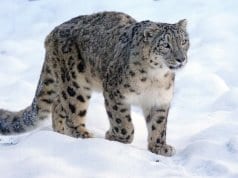Serengeti National Park is one of the most famous protected areas in the world. Home to a diverse array of wildlife species, Serengeti National Park gives visitors the opportunity to see some of the world’s most magnificent wildlife in person.
Below, we’ll talk about some of the most noteworthy species that inhabit the park. We’ll also provide tips to help you view as many as possible.
Serengeti National Park Basics
Serengeti National Park is comprised of more than 5,000 square miles of forest and grassland habitats.
Located in northern Tanzania, just to the east of Lake Victoria, Serengeti National Park was originally established in 1951. The oldest national park in the country, Serengeti National Park is one of the most popular tourist destinations in all of Africa.

There are three primary subregions of the park:
- The Serengeti Plains. The southern portion of the park features large areas of treeless grasslands, while granite outcroppings (called Kopjes) dot the area.
- The Western Corridor. Dominated by the Grumeti River, this area features open gallery forests and large expanses of grassy plains.
- The Northern Serengeti. Open woodlands dominate this region, although it also features vast grasslands too.
The Big Five
Serengeti National Park visitors may have the chance to see each of the “Big Five” game animals of Africa.
Many wildlife lovers want to see the “Big Five” species of Africa. This includes the lion, leopard, rhinoceros, elephant and Cape buffalo. Several parks will give you the chance to see these animals, but Serengeti National Park is probably one of the best places to see them all.

Elephants, buffalo and lions are common in the park, and these animals all tend to spend time out in the open. This will give you plenty of opportunities to observe and photograph them. Leopard sightings are somewhat less common, but they are still seen with regularity during safaris and tours.
Rhinos are the most difficult of the “Big Five” to see, as their numbers have plummeted over the last 100 years or so. Nevertheless, the critically endangered black rhinoceros does live within the park’s boundaries. Lucky tourists will get the chance to see these fantastic animals going about their daily lives.
Other Large Mammals
In addition to the “Big Five,” several other large and fascinating mammals call Serengeti National Park home.
Serengeti National Park is home to a number of interesting large mammals, and many of them occur in great numbers. For example, the park is thought to be home to roughly 1.5 million wildebeests, 200,000 zebra and 300,000 Thompson’s gazelles.

All three of these species partake in the great African migration. During this migration, the animals travel in a circular motion around the park. This migration pattern occurs all year long, but the best time for visitors to enjoy it is between June and October.
There are also several predators you may be able to observe in Serengeti National Park. In fact, many trail the migrating wildebeests, zebra and gazelles, waiting to pick off any stragglers. Spotted hyenas, golden jackals and black-backed jackals are some of the most common predators in the park. Lucky visitors occasionally spot cheetahs too.
Birds
Serengeti National Park offers excellent bird-watching opportunities, as it is home to more than 500 species.
In many ways, Serengeti National Park is a birdwatcher’s paradise. The park is not only home to an array of species, but the flat terrain makes it easy to see birds from great distances.

Grey-breasted spurfowl are some of the most commonly seen birds in Serengeti National Park. These pheasant-like birds are often easiest to spot in the morning or late afternoon. The birds spend most of this time searching for food amid the tall grass.
Secretary birds are also a common site in the park. Named for their fanciful feathers, which resemble the quills formerly used by secretaries, these are large birds, who often stand more than 4 feet high. Generalist predators, secretary birds feed on mammals, insects, frogs and snakes.
There are dozens of other beautiful bird species to watch for during your Serengeti adventure. This includes the bulky Kori bustard, colorful lovebirds, and weavers, who create intricate nests to keep their young safe from snakes.
Reptiles and Amphibians
A number of interesting and beautiful reptiles and amphibians live inside Serengeti National Park.
While birds and mammals may attract a lot of the attention from Serengeti visitors, the park is also home to a variety of fascinating reptiles and amphibians.

You’ll have the chance to see candy-colored agama lizards that spend their days basking on rocks. You may also see color-changing chameleons, who populate the trees and shrubs of the region. You may even spot leopard tortoises bulldozing their way through the tall grass, or monitor lizards searching termite mounds and rock piles for prey.
Several venomous snakes, including cobras and the famous black mamba, also live throughout the park. African rock pythons also live in the park. These gigantic snakes – which may reach more than 15 feet in length – are often secretive, but observant visitors may spot them amid the tall grass.
But while all of these reptiles are fascinating, none compare to the Nile crocodile – Africa’s largest native reptile. You should be able to see these predators lounging on the banks of rivers and lakes in the region.
Animal Spotting Tips
Employ these tips to give yourself the best chance of spotting a variety of awesome animals.
While Serengeti National Park is full of wildlife, many of the animals will do all they can to avoid being spotted. However, by embracing the tips listed below, you’ll increase your odds of spotting these animals during your visit.
- Be selective when choosing a guide service. Be sure to compare the guide reviews left by previous visitors. The difference between seeing a number of wildlife species and missing out often comes down to the skill of your guide.
- Try to seek out wildlife during the early morning or late evening. Most of the animals are most active during the early morning and late afternoon, so focus your efforts during these times. Just be sure to follow all safety rules, so you don’t find yourself stranded far from camp after dark.
- Wear earth–toned clothing to blend in with your surroundings. Some wild animals can be spooked by loud or bold clothing, so try to wear khaki and green clothing instead of Hawaiian shirts and other bright garments.
- Bring binoculars so you can enjoy good views of distant wildlife. It’ll be difficult to get close to some of the Serengeti’s animals (not to mention dangerous), so bring a good pair of binoculars. This will not only make it easier to observe large animals, but it’ll make bird-watching much easier.

As you can see, Serengeti National Park is certainly one of the best places in the world for wildlife viewing, and all animal lovers should include it on their “bucket list” of places to visit.
Have you ever had the chance to visit Serengeti National Park? We’d love to hear about your experiences. Tell us all about the wild animals you had the opportunity to see in the comments below.






![Red Angus Closeup of a beautiful Red Angus cowPhoto by: U.S. Department of Agriculture [pubic domain]https://creativecommons.org/licenses/by/2.0/](https://animals.net/wp-content/uploads/2020/03/Red-Angus-4-100x75.jpg)

